
Meet some of the locals
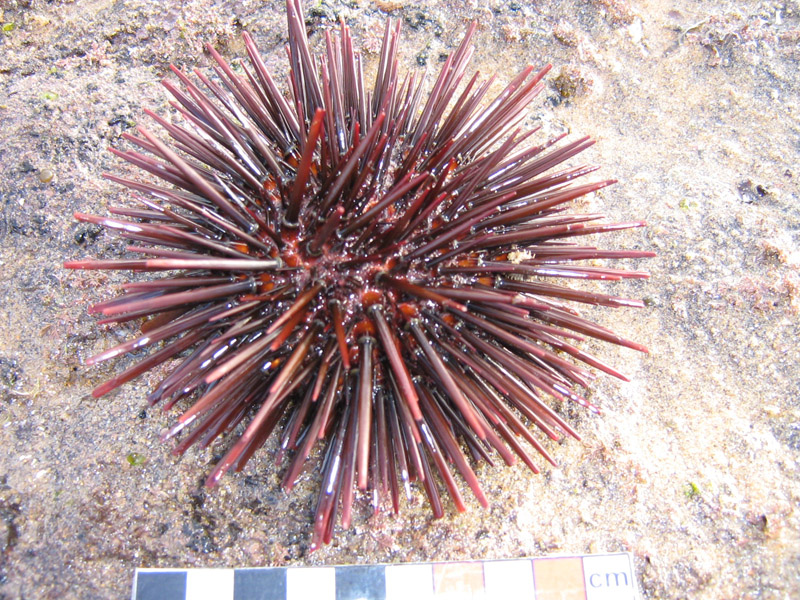
Sea urchins
Sea urchins have a hard globular shell made up of fused plates of calcium carbonate covered with skin and movable spines. They move around the reef using retractable tube feet which operate by pumping water in and out of the feet, creating suction. These feet help the urchin to turn itself over and hold onto rocks during heavy wave action. The two most common sea urchins at Long Reef are the spiny sea urchin Centrostephanus rodgersii and the purple sea urchin Heliocidaris erythrogramma.
Image courtesy Isobel Bennett
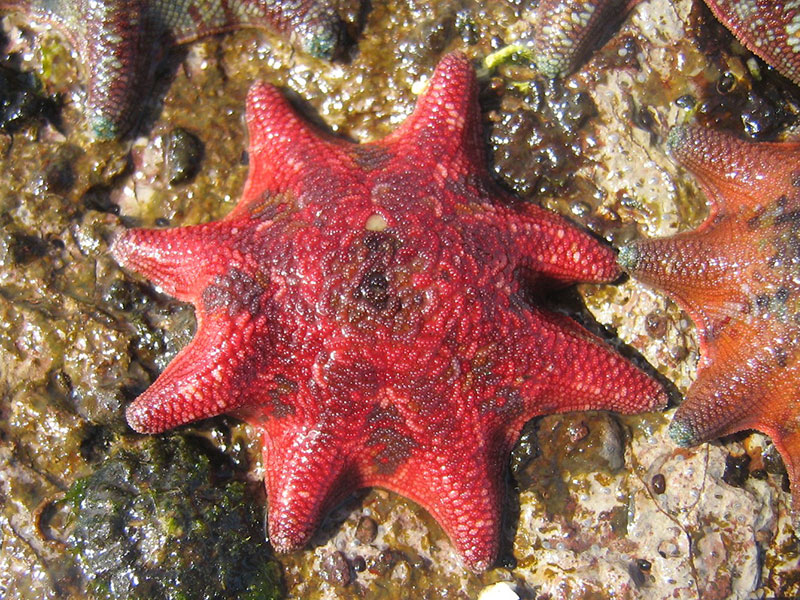
Sea stars
Sea stars come in many shapes and sizes and are often well camouflaged. They feed mainly on algae but they will eat slow moving or immobile animals by protruding their stomachs outside their mouths, enveloping their prey and then digesting it outside their bodies.
Image courtesy Isobel Bennett
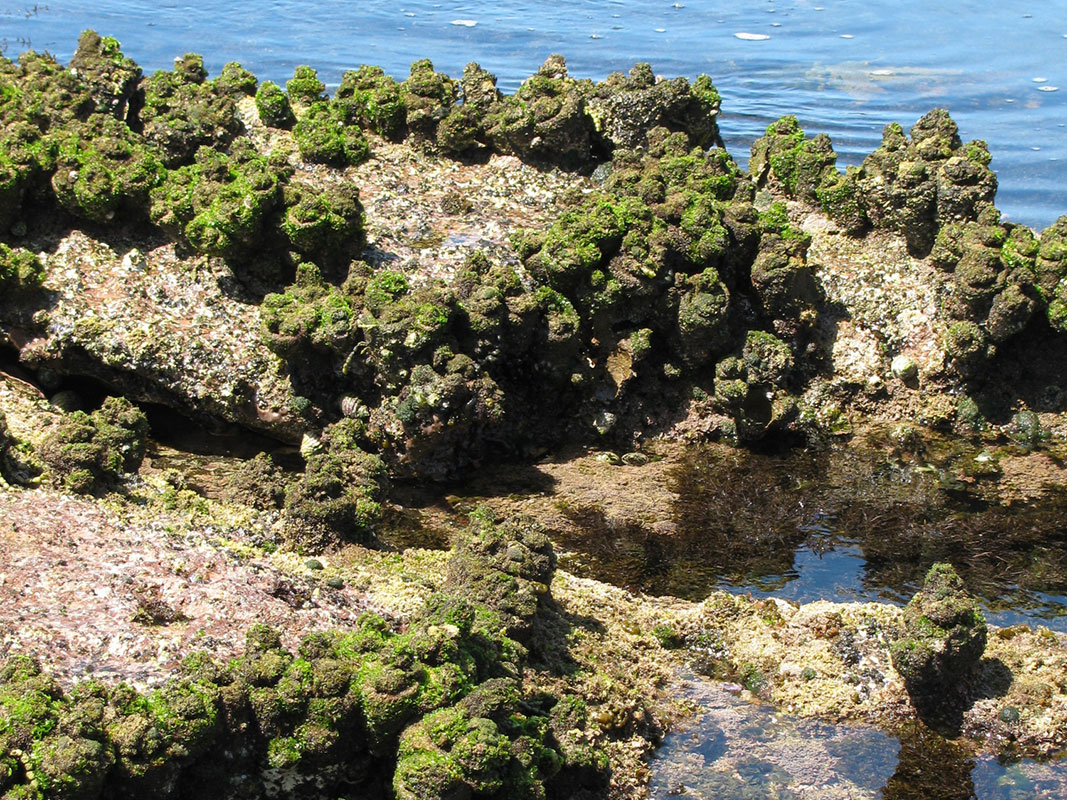
Cunjevoi
Cunjevoi is a very ancient animal that has a tough leathery external casing. They attach to the seaward side of the rock platform. When the tide is in, these sea-squirts collect food by pumping large quantities of water through a large sieve inside their bodies.
Image courtesy Peter Mitchell
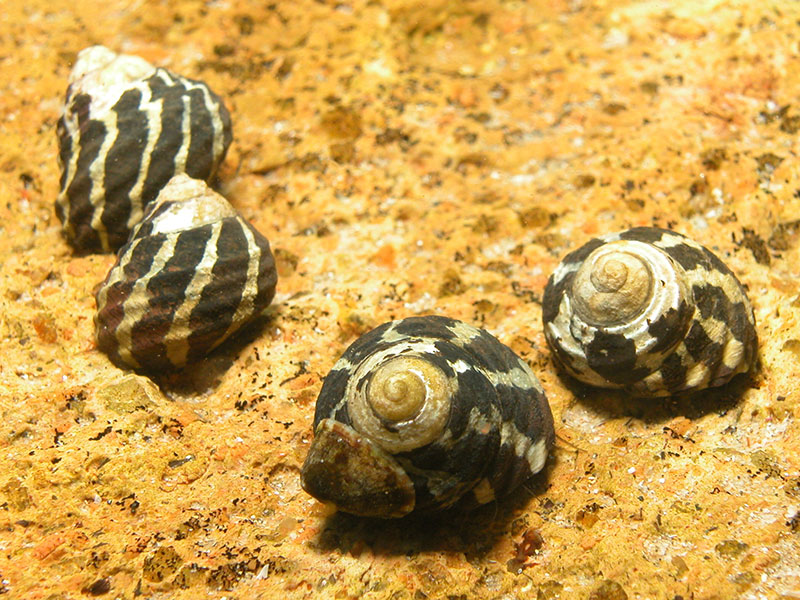
Zebra snails
Zebra snail (Austrocochlea porcata) are common spiral shells with black and white stripes. The width and number of bands are determined by changing environmental factors. They feed on microscopic algae.
Image courtesy www.daveharasti.com
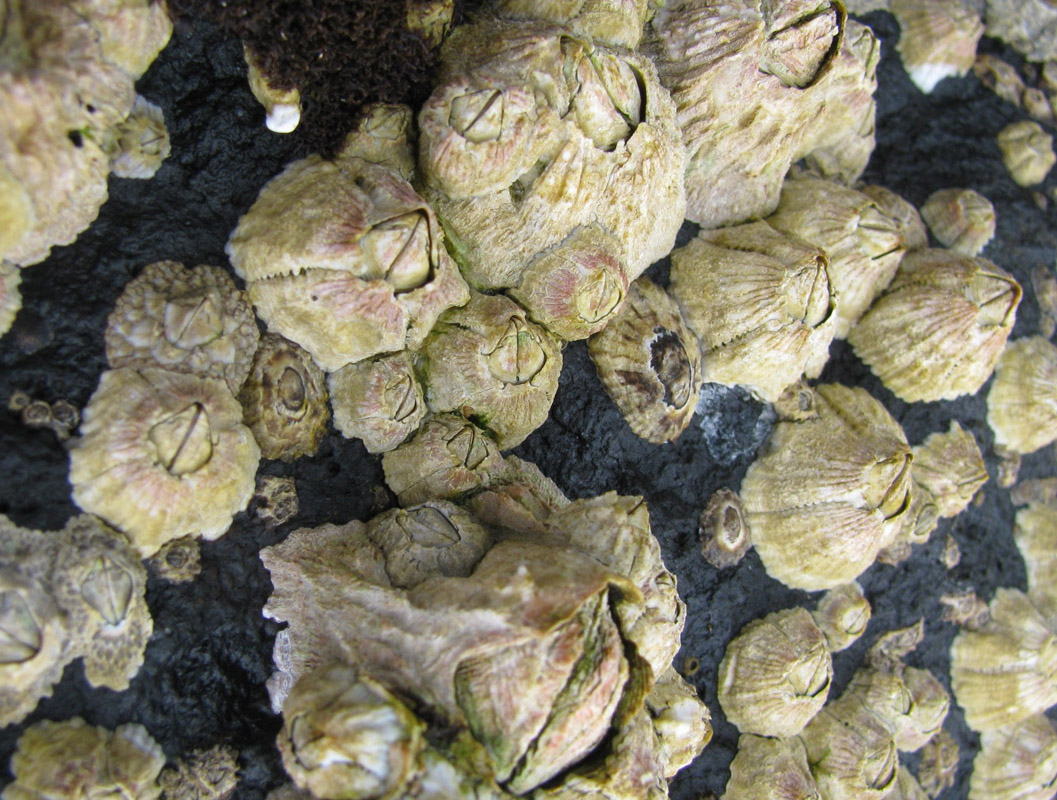
Barnacles
Barnacles are related to crabs but are hidden behind a protective barrier of calcium plates forming a circle around the animal. More plates at the top form a ‘door’ that they can open or close, depending on the tide. They fasten themselves to the rock by secreting a fast-drying cement that is among the most powerful natural glues known. Barnacles feed through feather-like appendages called cirri, which rapidly extend and retract through the ‘door’ at the top combing the water for microscopic organisms. The animal quickly withdraws into its protective shell if it senses a potential threat or when the tide goes out.
Image courtesy Isobel Bennett
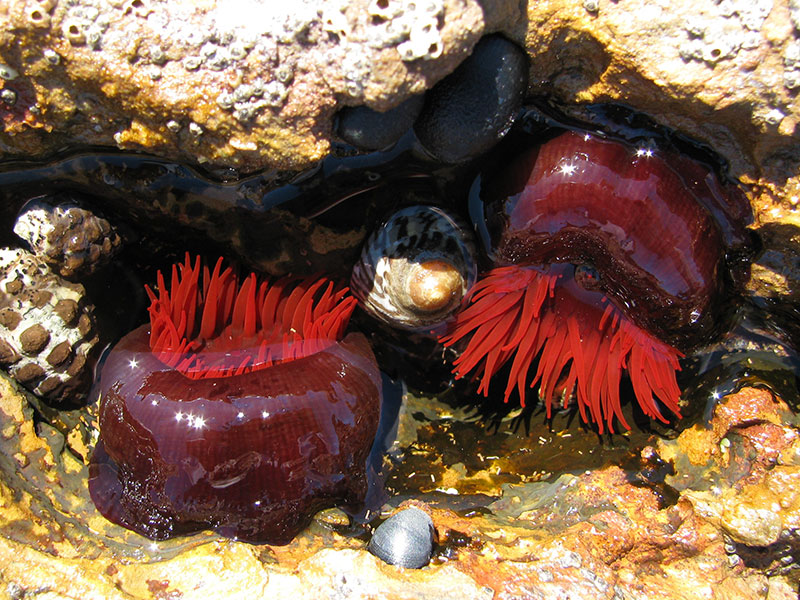
Waratah anemones
Waratah anemones are easy to spot at low tide as they look like maroon-coloured blobs, but when the tide comes in they open up to look like a rich, red flower. The ‘flower’ is in fact tentacles, which are armed with minute stinging cells. These tentacles reach into the water to catch food.
Image courtesy Isobel Bennett
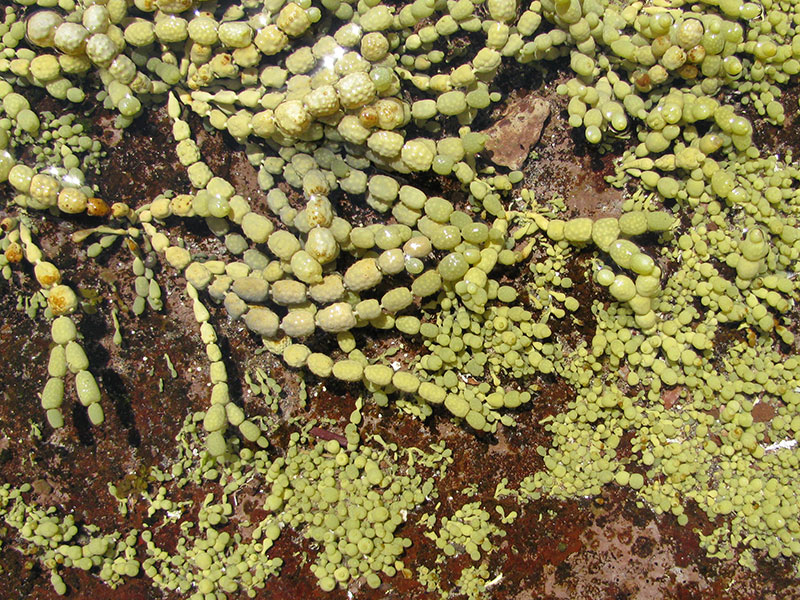
Neptunes necklace
Neptunes necklace (Hormosira banksii) is a brown algae found in abundance on mid-tidal rocks and in rock pools. The fronds consist of rounded beads that are full of air to keep the plant upright in the water. It can withstand exposure to the air because it has a slimy layer that conserves moisture. This algae is an important habitat and food source for many small crustaceans, juvenile fish and sea urchins.
Image courtesy Isobel Bennett
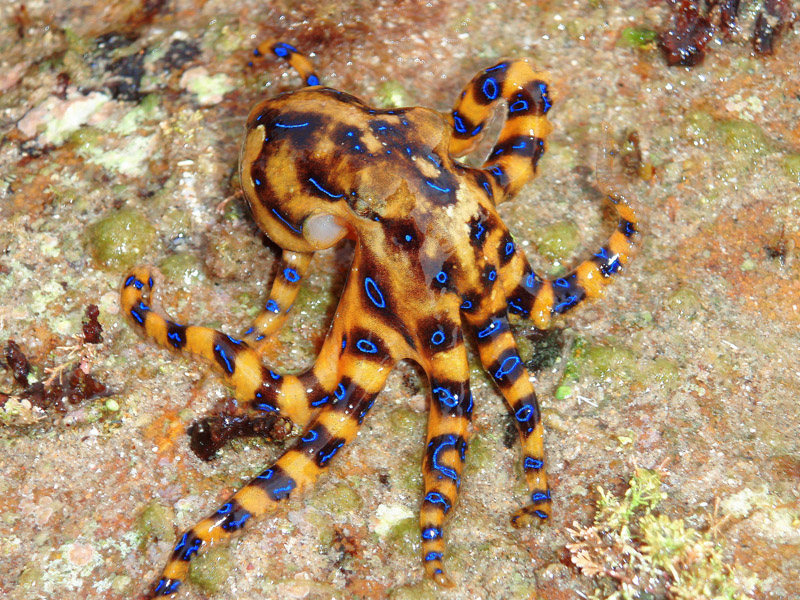
Blue ringed octopus
Blue ringed octopus are small with a body about 5 cm. They feed mostly on crabs but their bite can be lethal to humans so these animals should be left alone. Usually a dull brown colour and normally well camouflaged but when irritated they light up with vivid blue lines and circles. Octopus are highly intelligent animals.
Image courtesy Jack Hannan
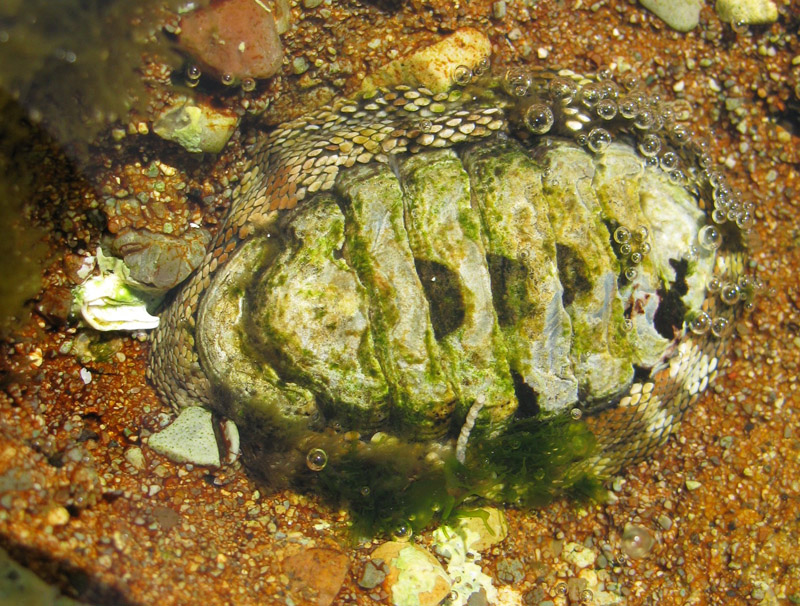
Chitons
Chitons are ancient molluscs with eight shell plates and a broad foot. This foot allows them to hold on very tightly to rock surfaces. Chitons feed on a wide range of algae, from microscopic to large plants.
Image courtesy Isobel Bennett
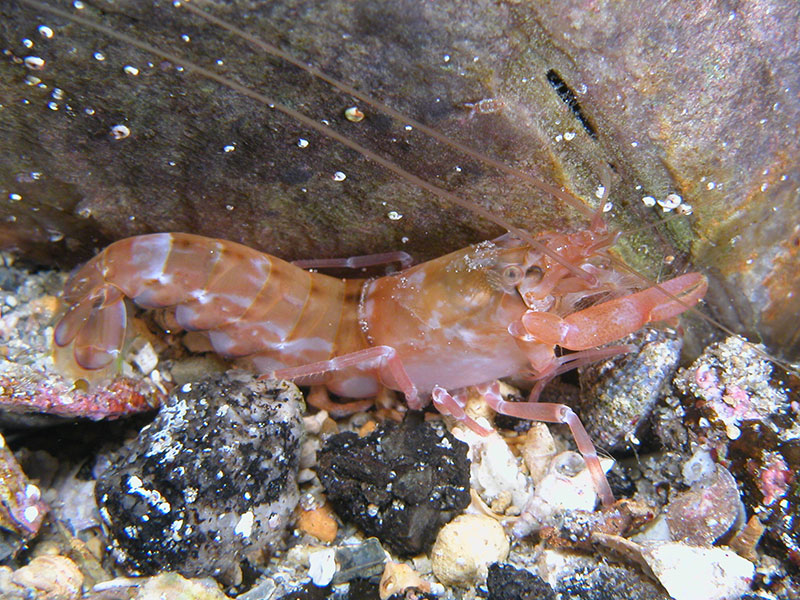
Snapping shrimps
Snapping shrimps have a large right nipper that they snap loudly to stun their prey, such as small fish. They then pull their food into their burrow to eat it. Snapping shrimps are a major source of noise in the ocean and you have probably heard them while snorkelling. The species at Long Reef grows to about 7 cm.
Image courtesy www.daveharasti.com
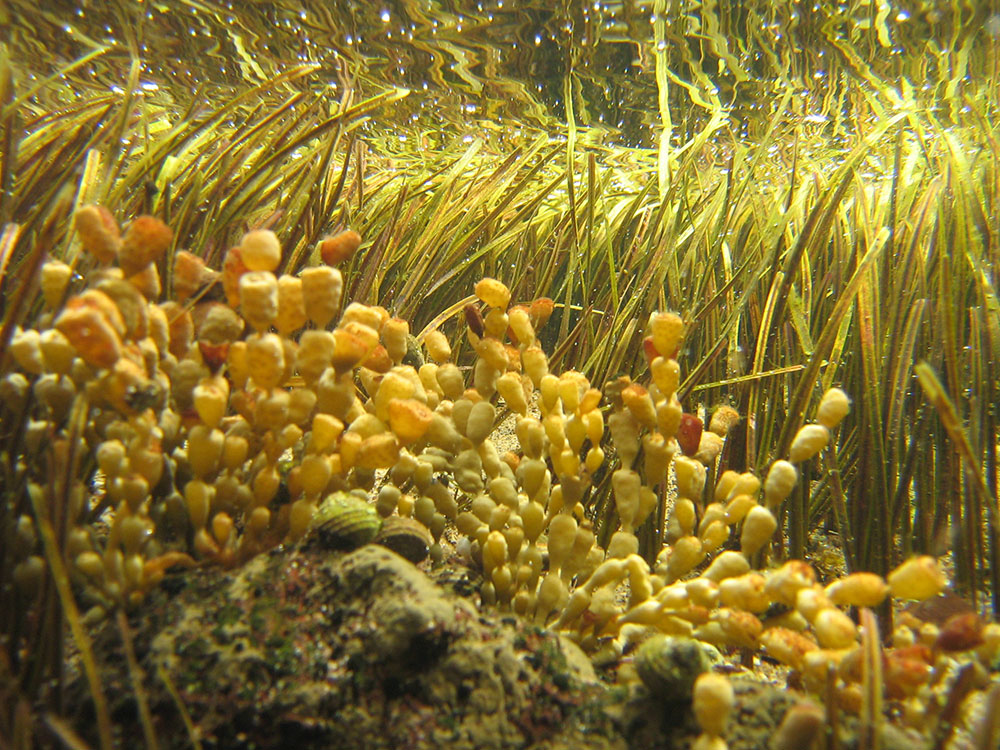
Seagrass
Eelgrass (Zostera) is a type of seagrass, which are the only flowering plants that can live underwater. They grow in sheltered shallow waters in sand or mud anchored in the sediment by a root-like structure called a rhizome. Seagrasses are important habitat for many species of plants and animals.
Image courtesy Isobel Bennett
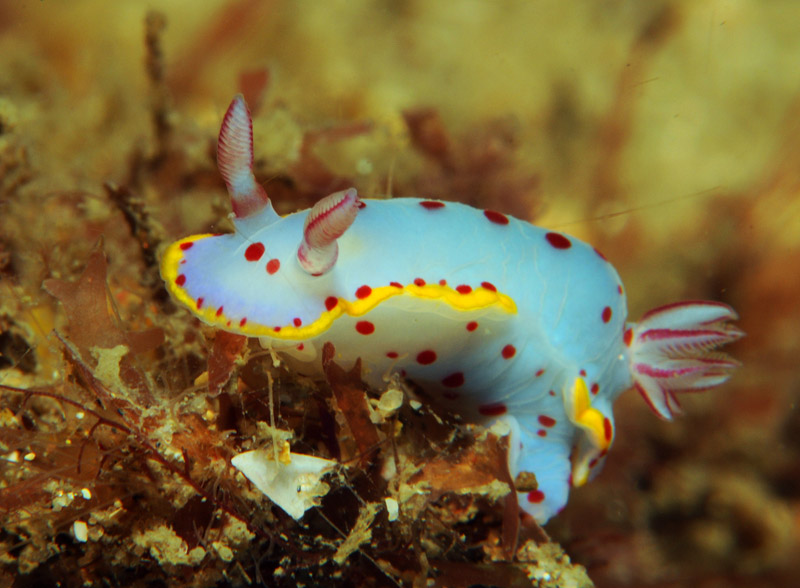
Nudibranchs
Nudibranchs are molluscs, like snails and octopus but because most are lacking a shell their common name, nudibranch, refers to their naked or exposed gills. They are carnivorous, feeding on sponges and sea anemones and because of their vulnerability have sophisticated defence mechanisms. Many nudibranchs are brightly coloured and are a favourite of scuba divers.
Image courtesy www.daveharasti.com
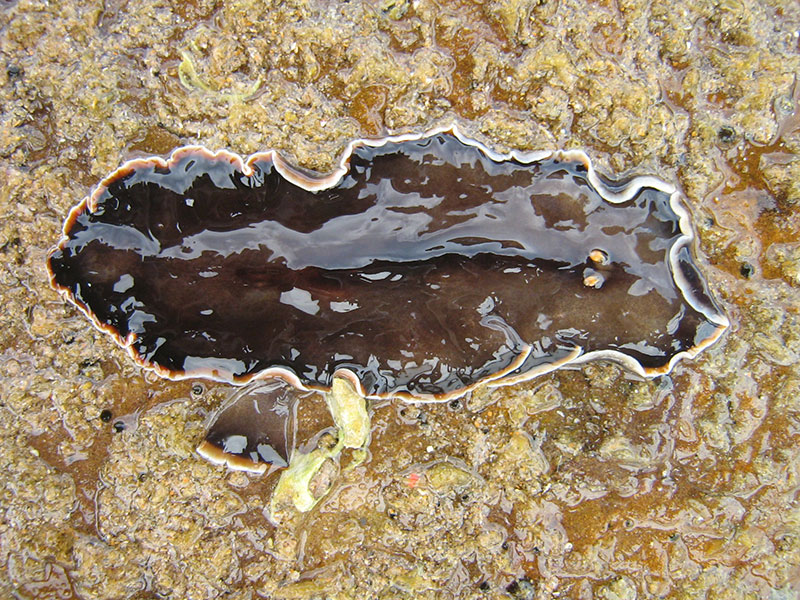
Flatworms
Flatworms are very thin leaf-shaped and flexible, sliding over rocks and swimming with a graceful rippling movement. Their mouths are in the middle of the underside of their bodies. They eat dead animals or capture small animals by wrapping themselves around their prey and entangling it in slime.
Image courtesy Isobel Bennett
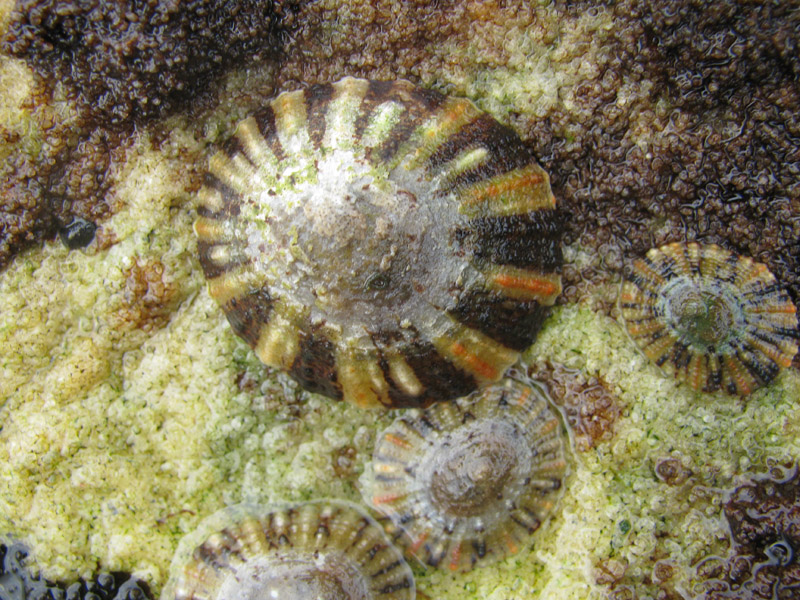
Limpets
Limpets have a cone-shaped shell. They move slowly across the rocks grazing on microscopic algae or larger seaweeds. They use the suction pressure from their very large foot to hold on to rock surfaces.
Image courtesy Isobel Bennett
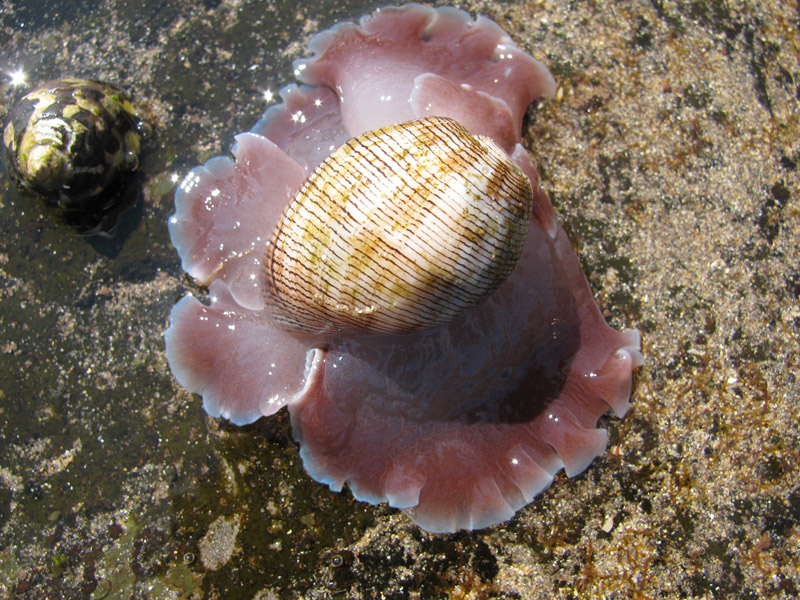
Bubble shells
Bubble shells are sea slugs with very thin shells. There are at least two species of bubble shell in the rock pools at Long Reef. The large one is Hydatina physis and the small one is Bullina lineata. Both of these species feed on worms.
Image courtesy Isobel Bennett
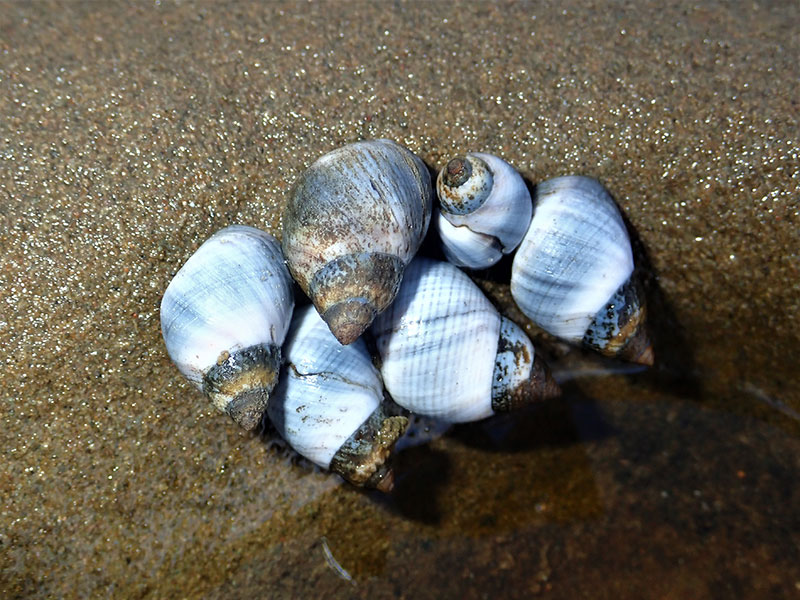
Blue periwinkles
Blue periwinkles are very small sea snails with blue-grey shells that feed on microscopic algae. They live in the upper drier levels of the tidal zone as they can survive a long time out of water. At low tide they can be found huddled together in cracks and crevices. Image courtesy Jack Hannan.
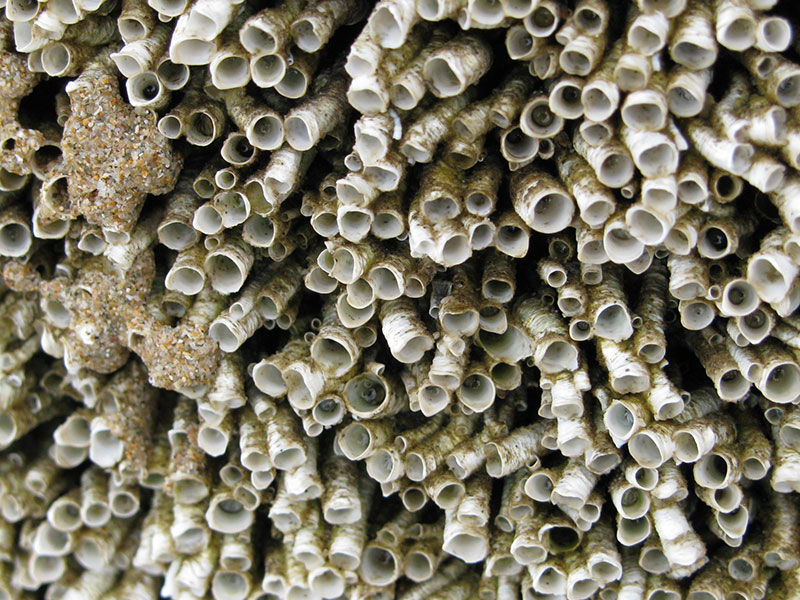
Galeolaria or Sydney coral worms
Galeolaria or Sydney coral worms live in tubes made of calcium carbonate which prevent them drying out when the tide is low. When the tide comes in they feed with black feathery tentacles that filter out plankton. The tubes maybe found on their own or in densely packed clumps that makes them look like coral. Image courtesy Isobel Bennett
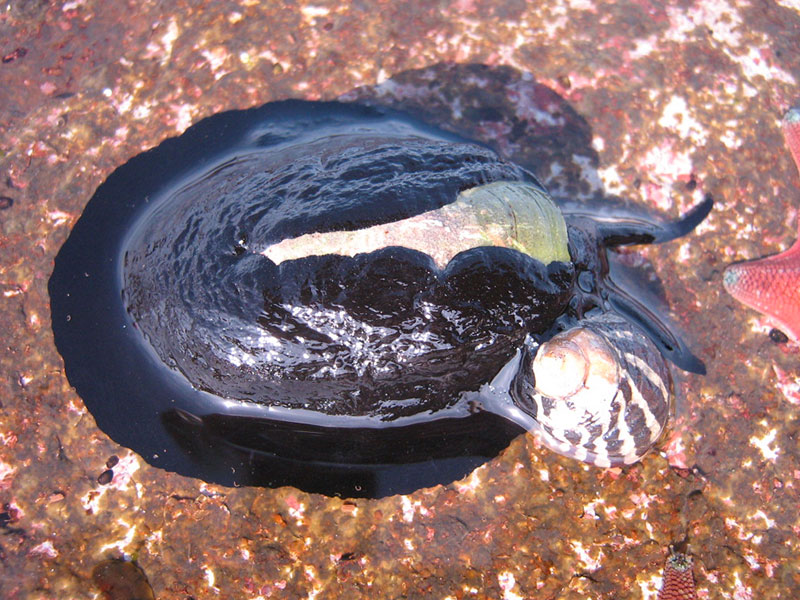
Elephant snails
Elephant snails are slow moving shellfish. They are black with a large white smooth shell which grows to about 7 cm. They have two wavy tentacles in front and the animal can enclose the shell with soft tissue (a mantle). Elephant snails graze on algae and are fairly common but normally hide under rocks and in crevices, so are rarely seen. Image courtesy Isobel Bennett
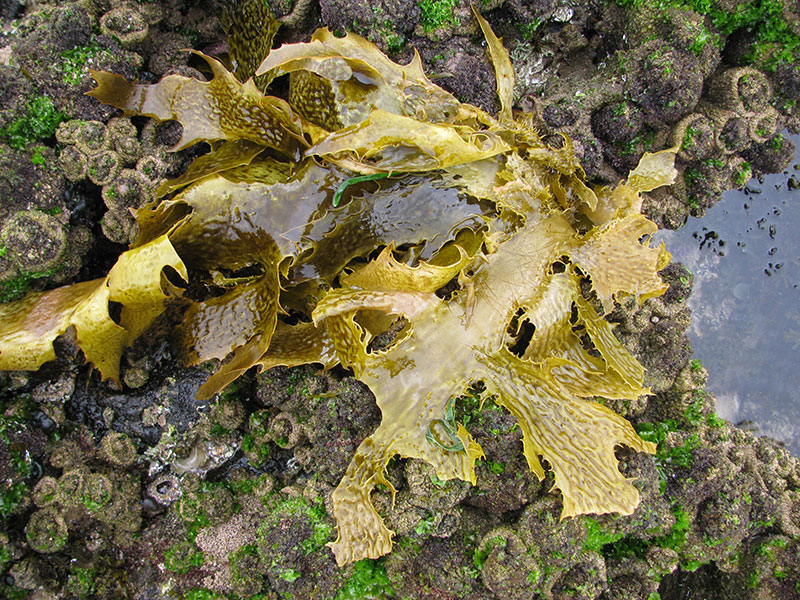
Kelp
Kelp is a large brown algae with long fronds and a strong holdfast (a root-like structure) that anchors the plant to subtidal rocky reef. They can grow up to the low tide mark. Some species of kelp have gas filled floats to help them stay upright in the water. Kelp forests provide important habitat and food for a wide variety of animals including invertebrates, fish and birds. Image courtesy Isobel Bennett.
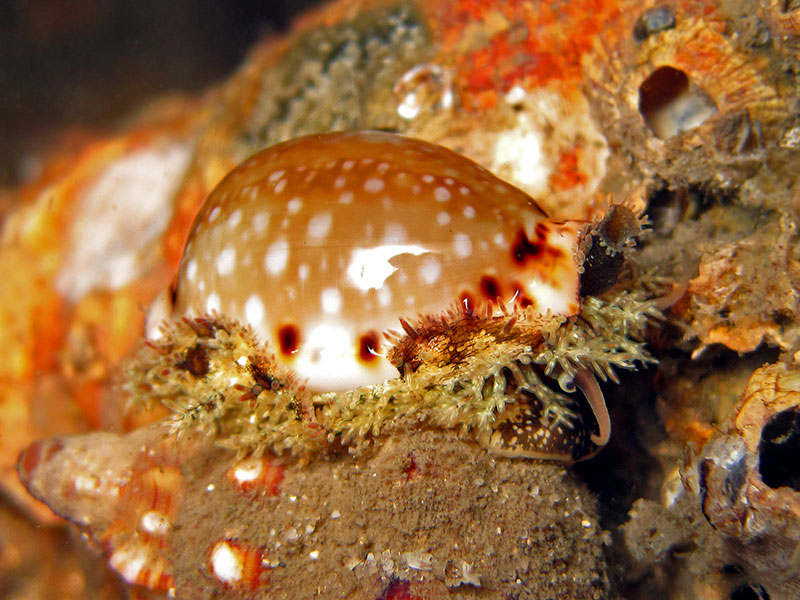
Cowries
Cowries have oval, glossy, beautifully coloured and patterned shells. There are about 23 species recorded at Long Reef. The most common ones are the snake’s head cowrie and the eroded cowrie. They are a favourite food of the common octopus. Image courtesy www.daveharasti.com
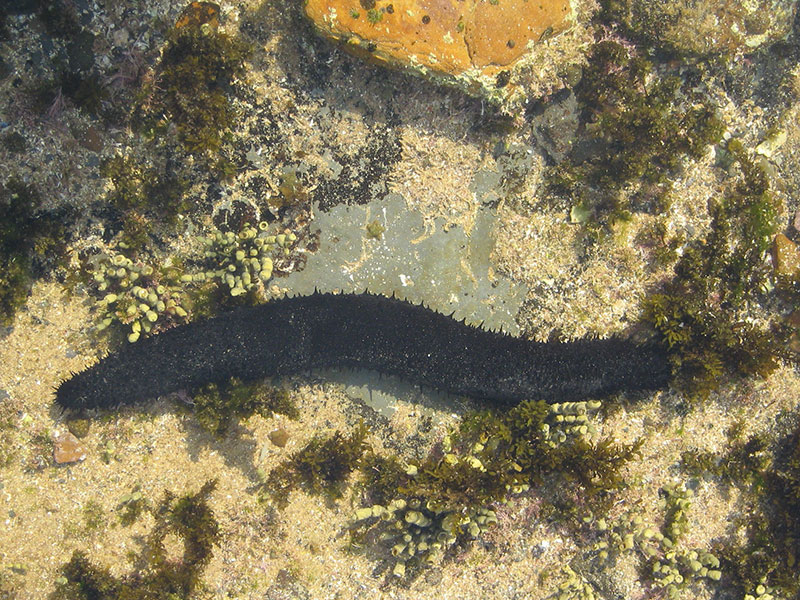
Sea cucumbers
Sea cucumbers are slow moving, long and spiny and they move along the bottom gulping in sediment. They sieve out the organic matter from the sediment and then expel the ‘clean’ sand and silt at the other end. They are basically the earthworms of the sea, recycling decomposing matter and aerating the seafloor. There are a few small local species. Image courtesy Peter Mitchell
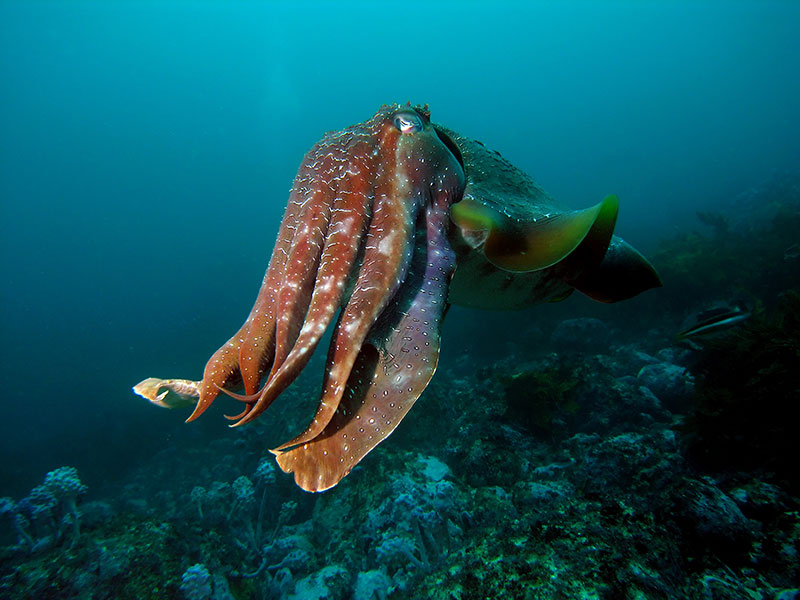
Giant cuttlefish
Giant cuttlefish are the world’s largest, growing to 60 cm long and over 5 kg in weight. They are highly intelligent and can change colour in an instant to imitate rocks, sand or seaweed using cells known as chromatophores. Cuttlefish have blue blood, 3 hearts and 10 tentacles including 2 specialised hunting tentacles. They eat fish, crustaceans and molluscs, crushing shells with their strong beaks. Image courtesy www.daveharasti.com
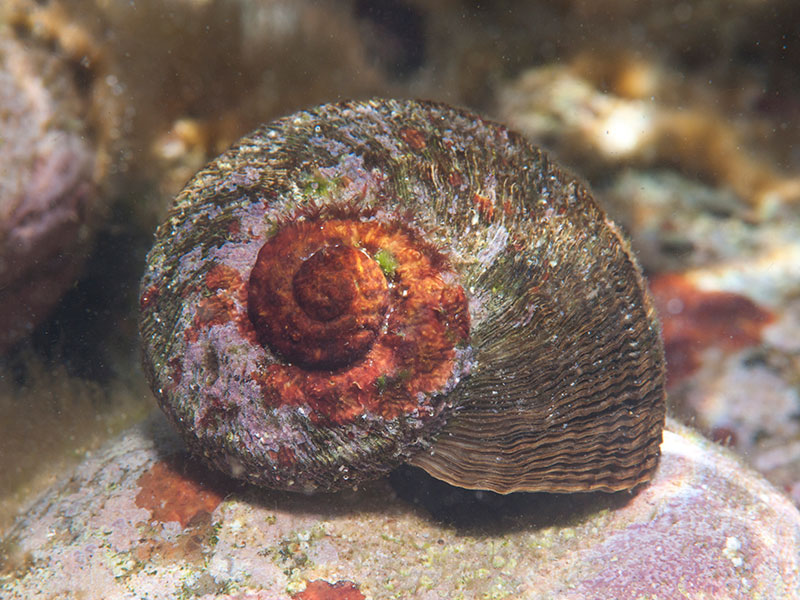
Turban snails
Turban snails get their name from the shape of their shell. They are vegetarian grazers that live in the mid to lower regions of the rock platform. They have a door (operculum) they can close when threatened by a predator. Image courtesy www.daveharasti.com
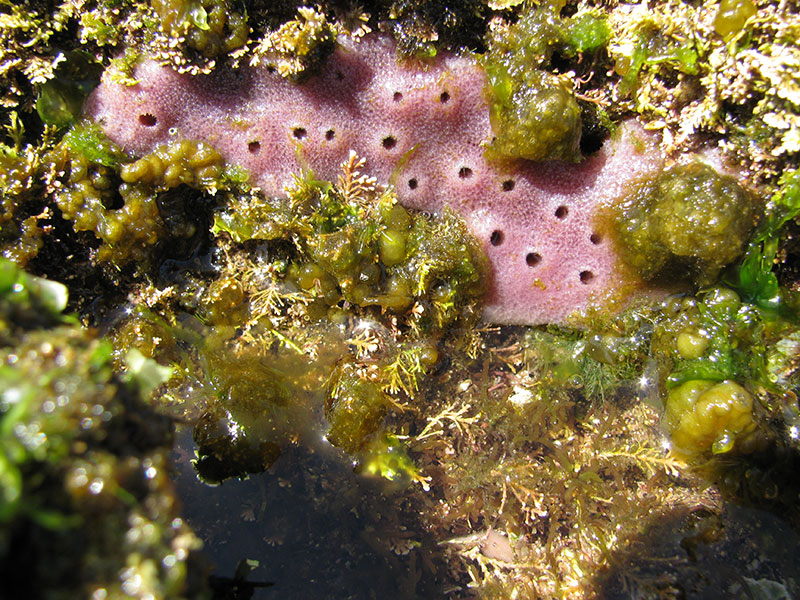
Sponges
Sponges are the simplest form of multi-cellular animals. They do not have tissues or organs but are made up of different types of cells. They are filter feeders, drawing seawater though their bodies to extract food and oxygen. Image courtesy Isobel Bennett
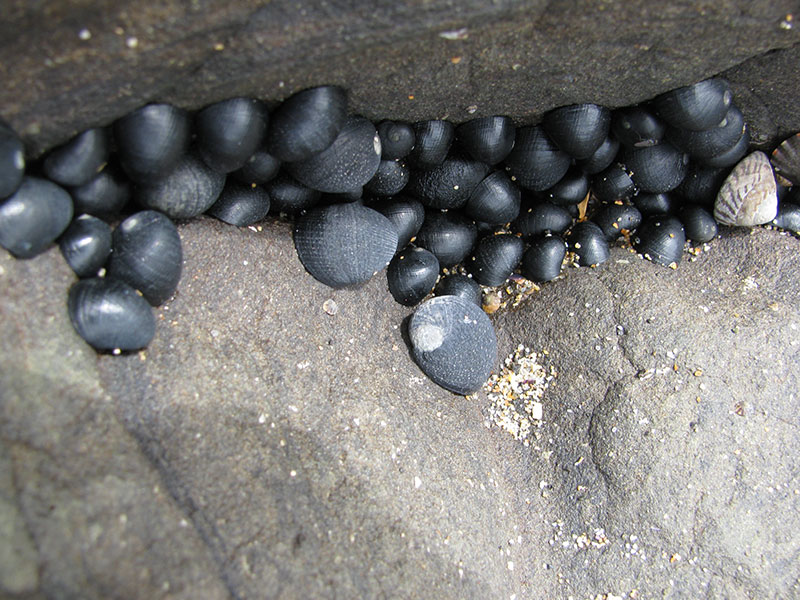
Black nerites
Black nerites are some of the most common and easily identified shells on rocky shores. At low tide they are found in crevices, rock pools or under rocks. When the tide is in they feed by scraping algae from rocks and as they move around they leave ‘snail trails’. Image courtesy Isobel Bennett
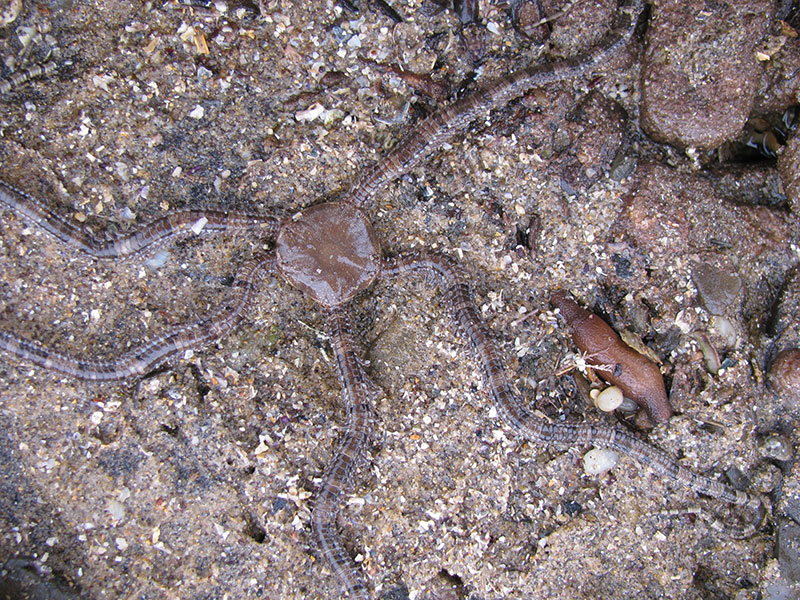
Brittle stars
Brittle stars have a central disc and five long sinewy arms that move continuously. They are brittle and their arms break off easily, however their arms can regenerate. Image courtesy Isobel Bennett
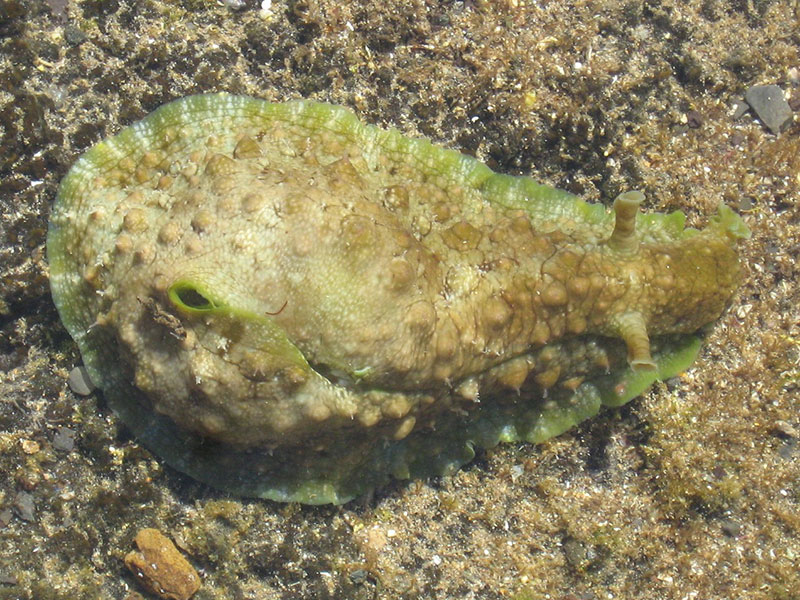
Sea hares
Sea hares are sea slugs with a small transparent and fragile internal shell. There are several local species and all feed on algae. Sometimes they get stuck in rock pools at low tide. One species emits a very intense purple dye when irritated. Image courtesy Isobel Bennett
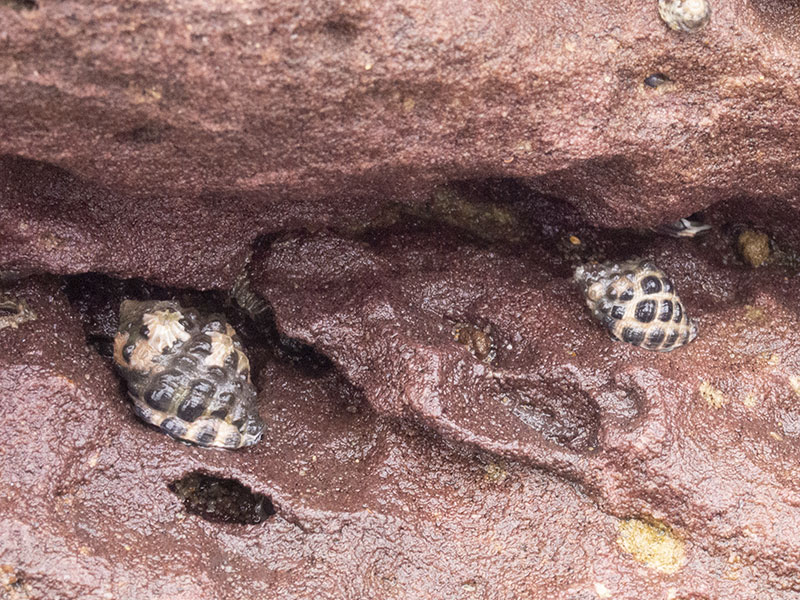
Mulberry whelks
Mulberry whelks have spiral rows of dark nodules like a mulberry. They occur at most levels of a rocky shore and particularly near their favourite food, oysters and limpets. The whelk bores a hole through the shell of their prey and with its rasping tongue (radula) reaches in to cut up the animal and then suck out the pieces. Image courtesy L. Diver
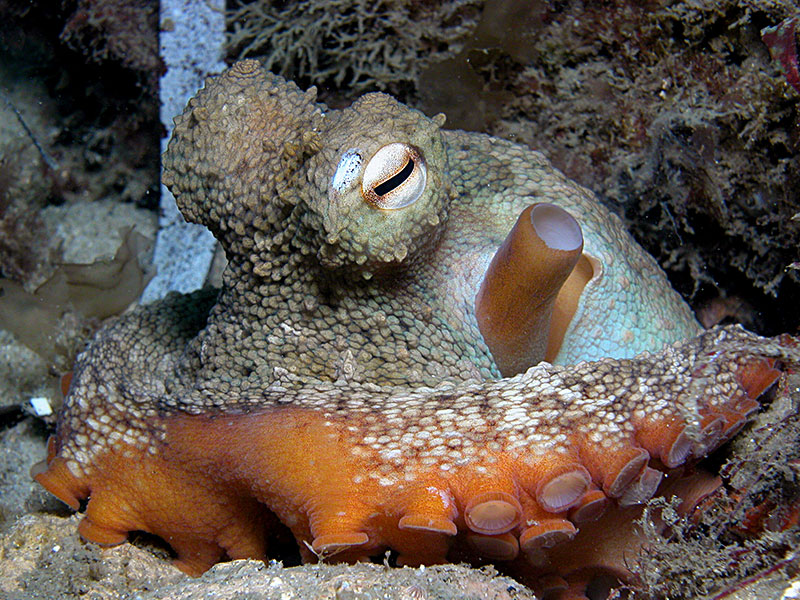
Common Sydney octopus
Common Sydney octopus, or gloomy octopus, are found on intertidal rocky shores and in the ocean. During the day they hide in a lair of rock rubble and the discarded shells of their prey. At night they emerge to feed on crabs and molluscs using their sharp beak. They can change their shape and the colour of their skin to imitate seaweed. Image courtesy www.daveharasti.com
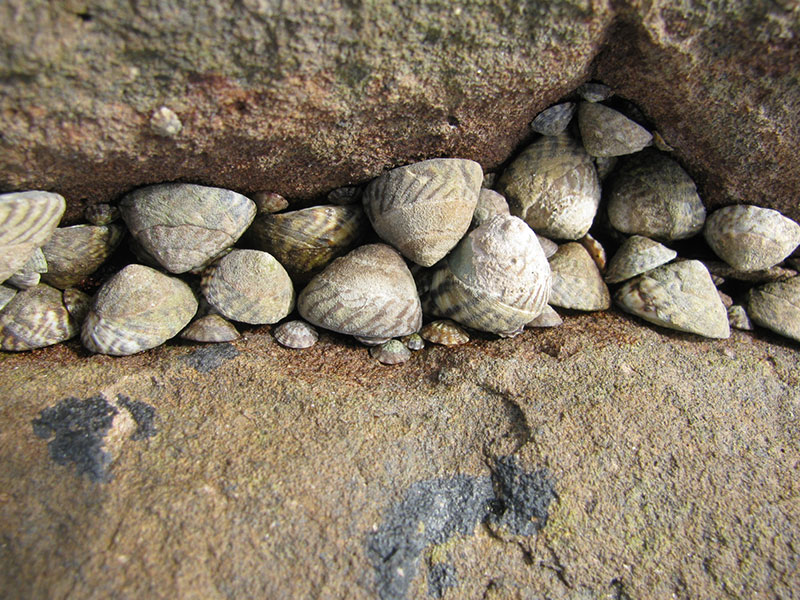
Striped-mouth conniwinks
Striped-mouth conniwinks are flat-based, conical snails that occur from mid to high-tide. They are grazers and have a tight fitting door (operculum) to keep in the moisture so they can spend long periods out of water. Image courtesy Peter Mitchell
References
- Colman, P. and Mitchell, P. 2011. Exploring Tidal Waters on Australia’s Temperate Coast. Groundtruth Consulting.
- Davey, K. 1998. A Photographic Guide to Seashore Life of Australia. New Holland, Sydney.
- Khan, A. 2017. Adapt: How Humans Are Tapping into Nature's Secrets to Design and Build a Better Future. St. Martin's Press.
- National Ocean Service 2020 Ocean Facts.
- Norman, M and Reid, A. 2000. A Guide to Squid, Cuttlefish and Octopuses of Australasia, CSIRO Publishing, Victoria (Collingwood)
- South Australian Government Giant cuttlefish fact sheet.
- Wilson, B. 2005. A Handbook to Australian Seashells. Reed New Holland.

